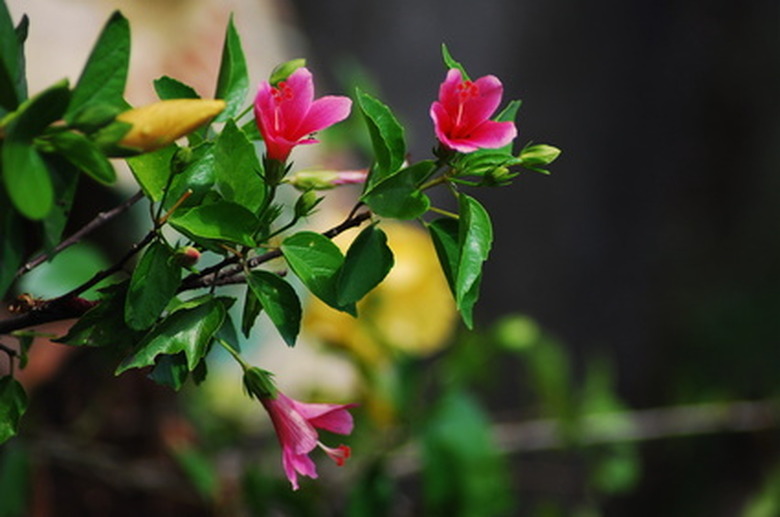Parts Of The Gumamela Flower
Gumamela flowers are shrub flowers native to the Philippines. They are often used in herbal teas along with rose hips, and comprise an important part of many different herbal and alternative medicines. If you want to use gumamela for health purposes, then it will be important to understand which parts of the flower are which so that you can use the most effective parts of the plant.
Anthers
Anthers are the male part of the flower, and are connected to the pollen sac of the flower. They protrude from the flower and have fuzzy tips. While most flowers only have four or five anthers, the gumamela has dozens of them.
Stamen Tube
The gumamela's stamen tube is attached to the anthers and creates a long, thin tube called the stamina column. Gumamelas are the only flower with a stamina column.
- Gumamela flowers are shrub flowers native to the Philippines.
- Gumamelas are the only flower with a stamina column.
Style
The style is the flower's ovary. It branches out into the stamina and each branch attaches to the stamens. This is where the flower is fertilized.
Stigma
Stigmas receive pollen grains. They contain flower ovules, where the pollen lands. The fertilized ovules will turn into seeds later in the growth process.
Petals
Gumamela petals, also called corolla, number five on nearly all gumamela flowers. They tend to be short and have a single lobe. Many breeders have developed gumamela plants that have long, flat stamens that look like petals in order to make the flower look fuller. Petals, dried or fresh, are used in many gumamela treatments, according to Philippine Herbal Medicine (philippineherbalmedicine.org).
- The style is the flower's ovary.
- Many breeders have developed gumamela plants that have long, flat stamens that look like petals in order to make the flower look fuller.
Sepals
Sepals are located at the very top of the stem of the flower. They are small, tender leaves. They protect the flower while it is a bud.
Roots
The root of the gumamela may also be used in herbal medicines and remedies. The root is the tough, thick, woody part of the flower that is located underground and draws nutrients and water from the soil into the plant so that it can grow.
